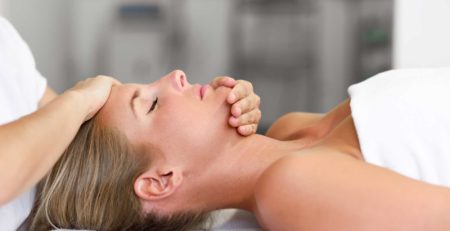
Knee pain can be caused by a number of conditions, many of which can be relieved without surgery. In other cases, intervention will be necessary. In either event, we can identify the cause of the problem and support the recovery process.
Most often, knee pain is a result of injury, but can also be linked to medical conditions, such as arthritis and infections. Teenagers may experience knee pain during excessive activity or during growth spurts when your tendons and muscles are straining your growth plates. Older generations are more likely to suffer with knee pain with arthritis or damage to the menisci.
Symptoms
Signs and symptoms that sometimes accompany knee pain include:
- Knee locking
- Weakness
- Instability
- Swelling and stiffness
- Difficulties straightening or bending your knee
- Popping, clicking or crunching noises
- Redness and warmth when touched
- Pain when bending
- Pain from long periods of sitting
Causes
Knee pain can be caused by injuries, mechanical problems, types of arthritis and other problems:
Injuries
A knee injury can affect any of the ligaments, tendons or fluid-filled sacs (bursae) that surround your knee joint as well as the bones, cartilage and ligaments that form the joint itself. Some of the more common knee injuries include:
- ACL injury. An ACL injury is a tear of the anterior cruciate ligament (ACL) — one of four ligaments that connect your shinbone to your thighbone. An ACL injury is particularly common in people who play basketball, soccer or other sports that require sudden changes in direction.
- Fractures. The bones of the knee, including the kneecap (patella), can be broken during motor vehicle collisions or falls. People whose bones have been weakened by osteoporosis can sometimes sustain a knee fracture simply by stepping wrong.
- Torn meniscus. The meniscus is formed of tough, rubbery cartilage and acts as a shock absorber between your shinbone and thighbone. It can be torn if you suddenly twist your knee while bearing weight on it.
- Knee bursitis. Some knee injuries cause inflammation in the bursae, the small sacs of fluid that cushion the outside of your knee joint so that tendons and ligaments glide smoothly over the joint.
- Patellar tendinitis. Tendinitis is irritation and inflammation of one or more tendons — the thick, fibrous tissues that attach muscles to bones. Runners, skiers, cyclists, and those involved in jumping sports and activities may develop inflammation in the patellar tendon, which connects the quadriceps muscle on the front of the thigh to the shinbone.


Mechanical problems
Some examples of mechanical problems that can cause knee pain include:
- Loose body. Sometimes injury or degeneration of bone or cartilage can cause a piece of bone or cartilage to break off and float in the joint space. This may not create any problems unless the loose body interferes with knee joint movement, in which case the effect is something like a pencil caught in a door hinge.
- Iliotibial band syndrome. This occurs when the tough band of tissue that extends from the outside of your hip to the outside of your knee (iliotibial band) becomes so tight that it rubs against the outer portion of your femur. Distance runners and cyclists are especially susceptible to iliotibial band syndrome.
- Dislocated kneecap. This occurs when the triangular bone (patella) that covers the front of your knee slips out of place, usually to the outside of your knee. In some cases, the kneecap may stay displaced and you’ll be able to see the dislocation.
- Hip or foot pain. If you have hip or foot pain, you may change the way you walk to spare these painful joints. But this altered gait can place more stress on your knee joint. In some cases, problems in the hip or foot can cause knee pain.
Types of arthritis
More than 100 different types of arthritis exist. The varieties most likely to affect the knee include:
- Osteoarthritis. Sometimes called degenerative arthritis, osteoarthritis is the most common type of arthritis. It’s a wear-and-tear condition that occurs when the cartilage in your knee deteriorates with use and age.
- Rheumatoid arthritis. The most debilitating form of arthritis, rheumatoid arthritis is an autoimmune condition that can affect almost any joint in your body, including your knees. Although rheumatoid arthritis is a chronic disease, it tends to vary in severity and may even come and go.
- Gout. This type of arthritis occurs when uric acid crystals build up in the joint. While gout most commonly affects the big toe, it can also occur in the knee.
- Pseudogout. Often mistaken for gout, pseudogout is caused by calcium-containing crystals that develop in the joint fluid. Knees are the most common joint affected by pseudogout.
- Septic arthritis. Sometimes your knee joint can become infected, leading to swelling, pain and redness. Septic arthritis often occurs with a fever, and there’s usually no trauma before the onset of pain. Septic arthritis can quickly cause extensive damage to the knee cartilage. If you have knee pain with any of these symptoms, see your doctor right away.
The Osteopath will review your symptoms and medical history and do a physical examination of your body. The Osteopath will then use manual manipulation to stretch muscles, enhance joint mobility, reduce inflammation, promote healing and rebalance the fundamentals of your body. You may also be provided with some stretches and exercises to be used at home.
The Osteopath will be able to determine how many treatments you will need after he has examined you at your initial assessment.



